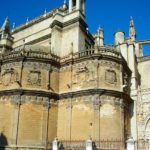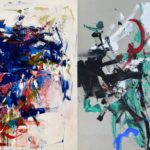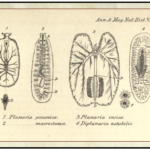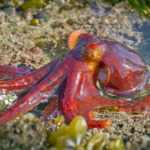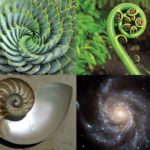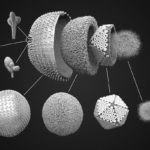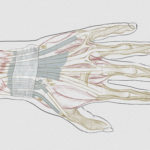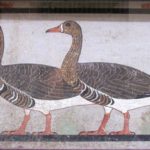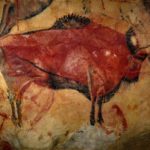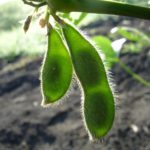La Geología aplicada al deterioro y conservación del patrimonio arquitectónico
- ESBERT, R.M.; ORDAZ, J.; ALONSO, F.J.; RUIZ DE ARGANDOÑA, V.G.; et al. (1988) Caracterización petrofísica y alterabilidad de las piedras de la Catedral de Sevilla. Materiales de Construcción, 38. pp: 5-23. Disponible en: https://core.ac.uk/download/pdf/234613554.pdf
- RECIO, F.J. (2013) La catedral de Sevilla no halla cura para sus piedras. El Mundo, Andalucía. Consultado por última vez el 22/08/2021. Disponible en https://www.elmundo.es/andalucia/2013/11/04/52776e4e63fd3d9d7f8b4579.html
- SALMERÓN ESCOBAR, P. (1992) Intervención en los pináculos de la Catedral de Jaén. Cuadernos de Arte, Estudios, 23. pp: 597-614
Congo y el expresionismo abstracto
- Bleakney, Sherman (1970). A possible evolutionary basis for aesthetic appreciation in men and apes. Evolution, 24: 477-479.
- Lincoln, Tim (2005). Congo’s art. Nature, 435: 1040.
- Holden, Constance (2005). Primal art. Science, 308: 1110.
- Morris, Desmond (1962). The biology of art. Alfred A. Knopf Publisher.
- Jones, Sam. Chimp’s art fetches £14,000. The Guardian (21 de junio de 2005). Disponible en: https://www.theguardian.com/uk/2005/jun/21/arts.artsnews
- Sylph, Ann. Congo and the biology of art. Zoological Society of London (27 de abril de 2021). Disponible en: https://www.zsl.org/blogs/artefact-of-the-month/congo-and-the-biology-of-art
Ilustrar más, para divulgar mejor
- Darwin, C., & Darwin, F. (1958). Autobiography and selected letters (Vol. 479). Courier Corporation.
- Hellenbrand, J., Mayer, R. E., Opfermann, M., Schmeck, A., & Leutner, D. (2019). How generative drawing affects the learning process: An eye‐tracking analysis. Applied Cognitive Psychology, 33(6), 1147-1164.
- Islamoglu, H., Ay, O., Ilic, U., Mercimek, B., Donmez, P., Kuzu, A. & Odabasi, F. (2015). Infographics: A new competency area for teacher candidates. Cypriot Journal of Educational Sciences, 10(1), 32-39.
- Schallert, D. L. (2017). The role of illustrations in reading comprehension. In Theoretical issues in reading comprehension (pp. 503-524). Routledge.
- Smith, J. (2006). Darwin’s worms. In Charles Darwin and Victorian visual culture (Vol. 50, p. 280). Cambridge University Press.
Una explosión de colores
- Gutiérrez-Pineda, K., Morales, R. & Batista, A. (2020). Descubrimiento de alcaloides en la piel de la rana Pristimantis gaigei, indicios de mimetismo Mülleriano en dos poblaciones de Panamá. Rev. Mesoamericana, 24 (1), pp. 49- 57.
- Raya, E. (2017). Serpientes: una vida como presas y depredadores. Boletín Drosophila, 23, pp. 22- 24.
- Warren, L., Scheier, M. & Riley, D. (1974). Colour changes of Octopus rubescens during attacks on unconditioned and conditioned stimuli. Animal Behaviour, 22 (1), pp.211-219. – Bebandi, G. & Roig- Jüñent, S. (1999). Especies miméticas de Camponotus punctulatus (Formicidae). Rev. Soc. Entomol. Argent., 58 (3-4), pp. 201- 208.
- Zug, G.R., L.J. Vitt, and J.P. Caldwell. 2001. Herpetology. An Introductory Biology of Amphibians and Reptiles, 2nd Edition. San Diego, Academic Press.
Las matemáticas escondidas en el arte de las flores
- Alvarez-Buylla, Elena R., et al. “Flower development.” The Arabidopsis Book/American Society of Plant Biologists 8 (2010). https://doi.org/10.1199/tab.0127
- Chandra, M., & Rani, M. (2009). Categorization of fractal plants. Chaos, Solitons & Fractals, 41(3), 1442-1447.
- Dumont, Yves. 2015. Maths for plants and plants for maths. Mathematics applied to agronomy and crop protection. Biomath Communications, 2 (1), Résumé, 1 p. International Conference on Mathematical methods and Models in Biosciences and Young Scientists School, Pretoria, Afrique du Sud, 12 July 2015/17 July 2015. https://doi.org/10.11145/545
- Fleming, A. J. (2002). Plant mathematics and Fibonacci’s flowers. Nature, 418(6899), 723-723. https://doi.org/10.1038/418723a
- Joy, E. K., & Garg, V. Fractals and their applications: a review. Journal of University of Shanghai for Science and Technology.
- Klar, A. J. (2002). Plant mathematics: Fibonacci’s flowers. Nature, 417(6889), 595-595. https://doi.org/10.1038/417595a
- Ždímalová, M., & Vavríková, L. (2017). Mathematics, Garden and Landscape Architecture. Proceedings of Aplimat (Aplimat 2017), 1746-1771.
¿Se necesita la sinergia del arte y de la ciencia para crear nuevas realidades?
- VOCES: EXUPERIO DÍEZ TEJEDOR por Francisco Javier Pérez | 5 Feb 2018 | Entrevista, Voces para una comunicación científica eficiente. Ciberimaginario.
- La comunicación médico-paciente: ¿Cuáles son las habilidades efectivas? Rev Med Chile 2010; 138: 1047-1054. SciELO Chile
- El cerebro entiende lo visual. DIARIOFARMA | 26.09.2019 – 11:13
La co-creación en la ilustración científica: Cómo crear contenidos de valor uniendo perfiles profesionales que se complementan.
- Guild of Natural Science Illustrators (2003). The Guild Handbook of Scientific Illustration. Editado por Elaine R. S. Hodges, Segunda edición.
- Lino Cabezas e Inmaculada López Vílchez (coords.), Juan Carlos Oliver, Raúl Campos y Manuel Barbero. Dibujo científico: arte y naturaleza, ilustración científica, infografía, esquemática. Ediciones Cátedra.
- M. Bourgery & N. H. Jacob. Atlas de Anatomia Humana Y Cirugia. Editorial Taschen.
La ciencia como herramienta de resolución de enigmas.
- Chapman, M. A., Tang, S., Draeger, D., Nambeesan, S., Shaffer, H., Barb, J. G., … & Burke, J. M. (2012). Genetic analysis of floral symmetry in Van Gogh’s sunflowers reveals independent recruitment of CYCLOIDEA genes in the Asteraceae. PLoS Genet, 8(3), e1002628.
- Kitagawa, M., & Tomita, T. (1929). A new basic compound in jackbean, which splits off urea by a liver ferment. Proceedings of the Imperial Academy, 5(8), 380-383.
Biocombustibles, lo que no te han contado
- Soley, Rosalía (2019). Bioenergía en España: ¿Es realmente una alternativa? 2. Mestre, Cristina (2020). ¿Es la soja el nuevo aceite de palma?
Malins, Chris (2020). Biocombustible: más leña al fuego. - Malins, Chris (2020). Destino deforestación.
- Villadiego L, Castro N (2020). Soja ¿La nueva palma de los biocombustibles? 6. Heguy Silvina (2013). Argentina la tierra de los niños envenenados
- Pratesi I, Galaverni M, Antonelli M, Asunción M, Rivera L, Suárez L (2020). Pérdida de naturaleza y pandemias: un planeta sano por la salud de la humanidad.
